Hotels, Rice and Curry
After ten weeks spent searching the eateries of Sri Lanka, finally we discovered an establishment that serves up the elusive dish of Rice and Curry. “What might it taste like?”, we wondered, nervously anticipating our first bites of this mysterious meal. “Like a pygmy unicorn?” Yes, it must taste like a pygmy unicorn! A creature almost as rare as rice and curry itself!
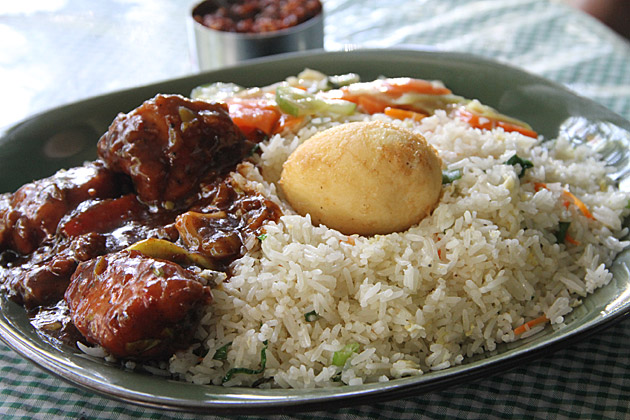
Okay, okay. Rice and curry is somewhat more common than pygmy unicorns. In fact, it’s more common than Sri Lanka’s flea-bitten street dogs. Our daily schedule for the past ten weeks has looked something like this: wake up, rice and curry, work a little, rice and curry, sight-seeing, rice and curry, beer, go to bed. Dream of rice and curry.
Rice and curry is unavoidable. It’s on every menu and, more often than not, it’s the only thing on the menu. Luckily, it’s delicious. A big bowl of rice, served with a variety of curries — dhal, a yellow lentil-based curry, usually makes an appearance, as does a coconut curry. The bowls set down in front of you always include something unexpected, bringing a welcome bit of variety to this daily dietary staple.
You can order rice and curry with chicken, fish or egg, but we normally go for straight-veggie. The curries are usually spicy, and you’re often provided with a small dish of sambol, a potent chili sauce, in case you really want to punish yourself. In most places, even the cheapest neighborhood joints, the staff will continue to refill your bowls, until you’re stuffed.
The best places to order rice and curry are hotels. Now, I don’t mean a “hotel” like the Holiday Inn or Hilton! No, I’m using the Sri Lankan definition of the word. For whatever reason, they’ve decided to call tiny, cheap restaurants “hotels”. It’s an island-wide linguistic phenomenon. Perhaps it makes them feel fancier if they’re jotting off to the hotel for their lunch, rather than admitting that they’ll be at the local hole-in-the-wall stuffing sopping handfuls of rice and curry into their mouths.
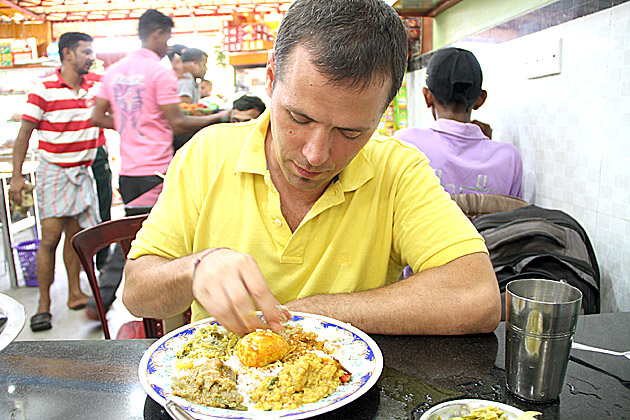
Yep: handfuls. Foreigners will be provided with silverware (usually dripping wet from a dunk in the “cleaning bucket”), but locals eat with their hands. They say it makes the food taste better. I’ve tried it before, carefully watching the technique of an old woman at the table next to me. Push some curry into a pile of rice, then smoosh it all together, over and over again, like you’re kneading a tiny ball of dough with your finger tips, then scoop it into your hand and smash it into your mouth. It’s hard! This isn’t sticky rice, and it’s being further loosened by the curry, so the transfer from fingers to mouth is a sloppy affair. I felt embarrassed on my first attempts but, looking around, realized that even the locals make a mess of it. (I don’t know about tasting better, but it is kind of fun).
We’ve got about eighteen days left in Sri Lanka, which means I’ll be enjoying about thirty-six more plates of rice and curry. I won’t pretend to be overjoyed by the prospect, but it could be worse. At any rate — and I don’t know if this is an unintended benefit of eschewing meat, or a consequence of switching to a rice-based diet — both Juergen and I are dropping pounds like bulimic crack addicts. “The Rice and Curry Diet”… sounds like a best-seller!
Hotels, Rice and Curry Photos
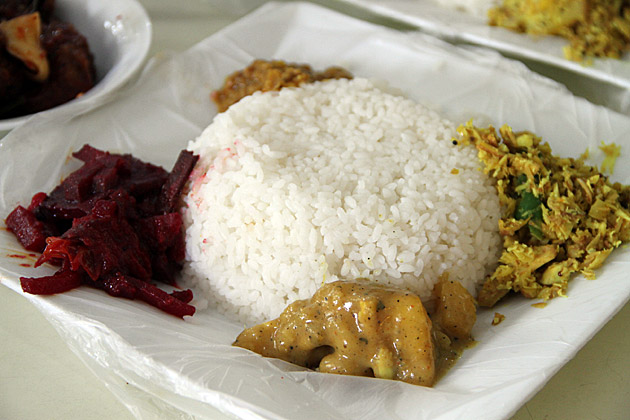
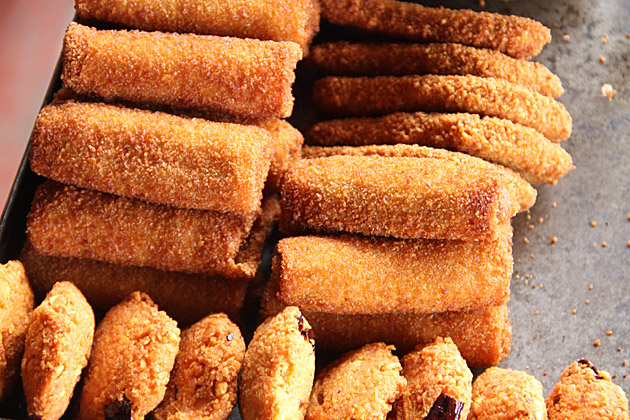
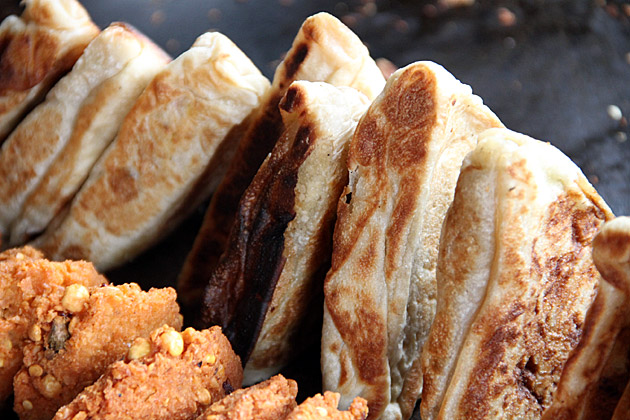
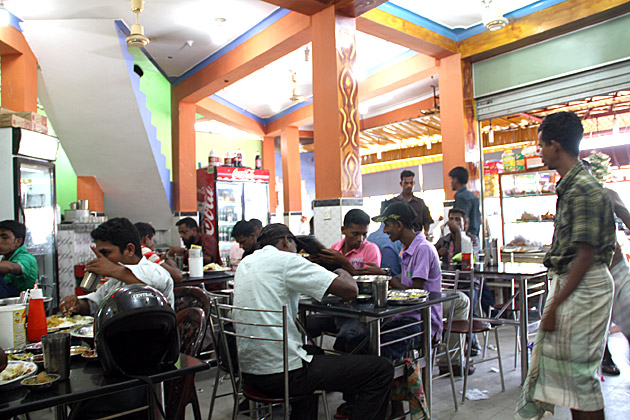
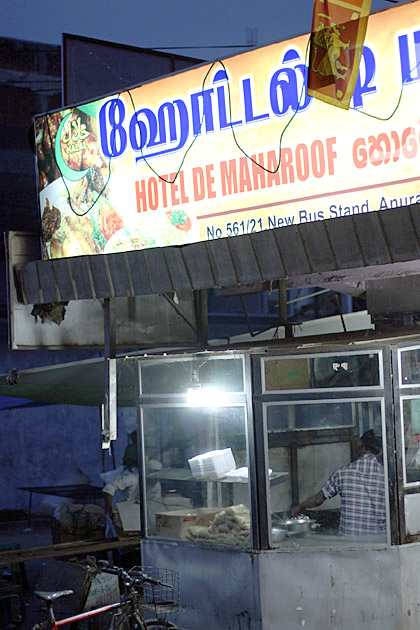
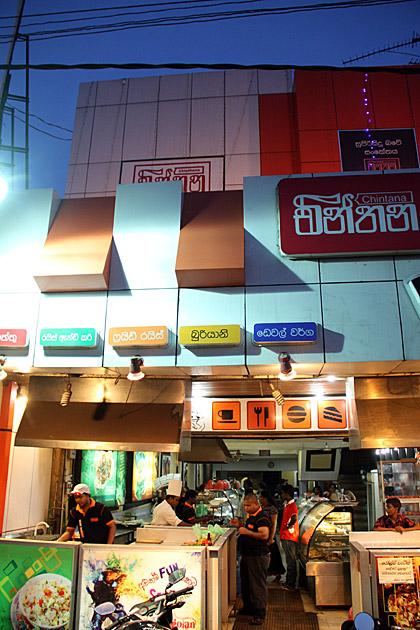

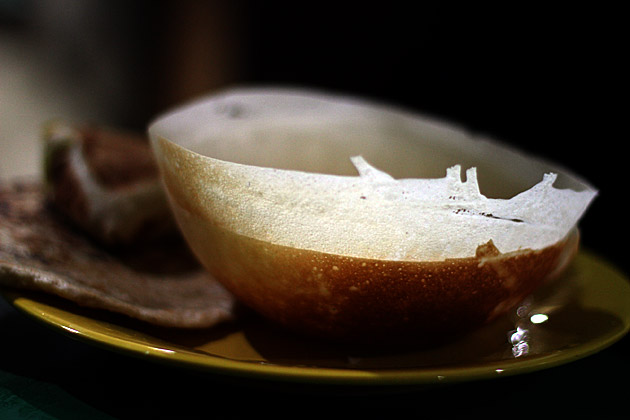
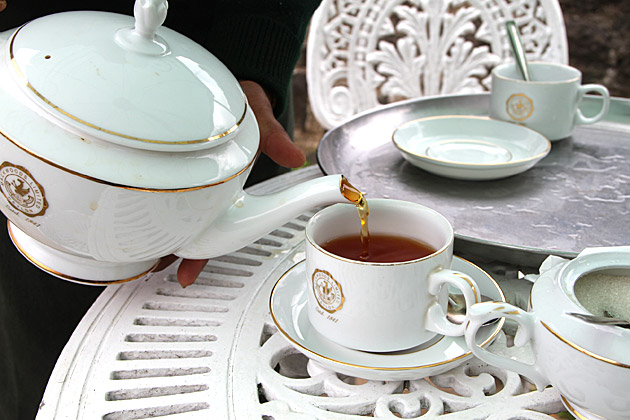
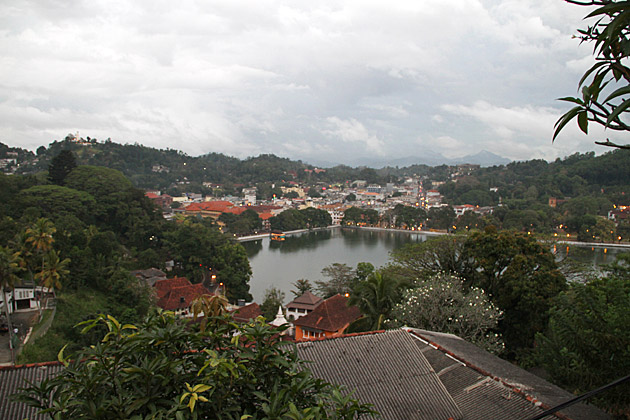

In South India, people call restaurants “Hotels” too. My 4 year-old assiduously corrects them, but in vain: “You stay in a hotel, but eat at a restaurant”.